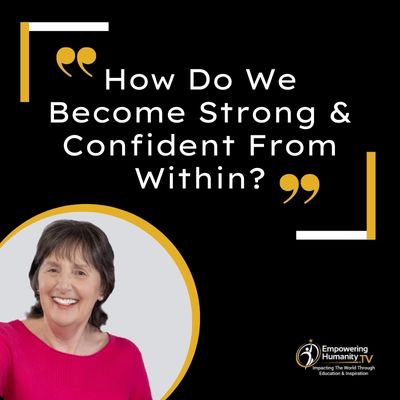“How Do We Become Strong & Confident From Within?”
by: Pragito Dove
First, be one with yourself. Accept yourself. Love yourself.
Society conditions, educates, and “civilizes” each of us in such a way that we begin to condemn ourselves. For example, society states that you should not be sad. You should be happy. If your truth is that you are sad, you repress the truth, and become something you are not; you become phony. This phony side of you is what society accepts. A division is created within yourself.
Psychological pain exists because you are divided, at war within yourself. As a result, life becomes complicated. When you lose touch with your inner truth, and are living from a divided self, pulled this way and that, by your desire to please and be accepted by others, you find yourself lost, isolated, and deeply unhappy. You create challenges, adversity, and difficulties to keep yourself distracted and to prove to yourself that you are worthy.
If, however, you are able to live your sadness with total authenticity, the division disappears. For example: you are sad: that is the truth of this moment. But your conditioned mind says: “You have to be happy. Smile! What will people think of you?”
Here is the problem: you pretend, you act, you repress the truth. The phony becomes the ideal.
How can you know, and love yourself, if you don’t accept yourself?
Live your sadness in total authenticity, and you will be surprised. A miraculous door opens in your being, because the division disappears. Sadness is there and there is no question of any ideal to be anything else. There is no effort, no conflict, no war. “I am simply this” and there is relaxation. And in that relaxation is grace, and joy.
Psychological pain exists because you are divided. Pain means division, and joy means no-division. You might be thinking: how can feeling my sadness bring joy? It looks paradoxical, but it is true. Try it. However, please note: accepting your sadness with an agenda to feel joy, is not going to work. Joy arises through your authentic expression of sadness.
Joy is a by-product of being authentic.
Joy is a natural consequence of being united with your sadness, because it is your truth, in this moment. In the next moment you may be angry: accept that too. And the next moment you may be something else: accept that too.
Live moment to moment, with acceptance, without any division, and self-love, self-worth, self-confidence arise within you, naturally, and automatically.
Drop all ideals of how you should be, and accept who you are, in each moment.
The journey of self-acceptance starts with becoming aware of your feelings, and allowing yourself to feel your feelings. We are human. Feeling is a part of the human experience. Get used to feeling because feeling is to LIVE, feeling is to be ALIVE. When uncomfortable feelings arise: allow, experience and accept.
On the other side of your sadness, hurt, and despair is your magnificent, brilliant, luminous spirit, which is not damaged. Your spirit is love, and when aligned with your authenticity, guides your life with grace, and ease.
Accepting yourself, warts an’ all, helps you become strong and confident from within, so that no matter what other people think or say, you are deeply rooted in your own self-worth. Your feelings are the key. Love is always waiting on the other side. The only thing blocking you from receiving more love is your resistance to feeling your feelings.
Are you thinking: I don’t want to feel because I don’t want to be hurt any more?
I understand. I went through this very same experience. As I allowed myself to start feeling, something wonderful happened. I began to feel more love, to laugh, and enjoy my life more. I was liberated from a prison of pain and opened up to more self-love, self-worth, and self-confidence, AND to receiving more love from others.
Inner strength and confidence are an inside job. When you get to the point where you can accept yourself, the need for challenges, adversity, and complications, just falls away, because you don’t need to prove your worth any more to yourself.
Meditation: Accept Yourself– 4 minutes
Benefits: In the very experiencing of your feelings, a spaciousness is created, and miracles can occur. Trust that, even when you feel miserable, on the other side of the misery, is love. Our natural state is love. All we have to do is accept who we are, in any given moment, and love is there.
Start gently, with compassion for yourself.
Sit, or lie down, whichever is most comfortable for your body. Breathe, relax your body, open your palms upwards, in a receptive posture. Allow your feelings, whatever they are, without judging, condemning or criticizing yourself. Accept what is happening, in each moment, without wanting it to be different. When you fight what is, you make it worse. You are the way you are: accept yourself with joy, with gratitude.
Reproduced with permission from Pragito Dove www.discovermeditation.com




